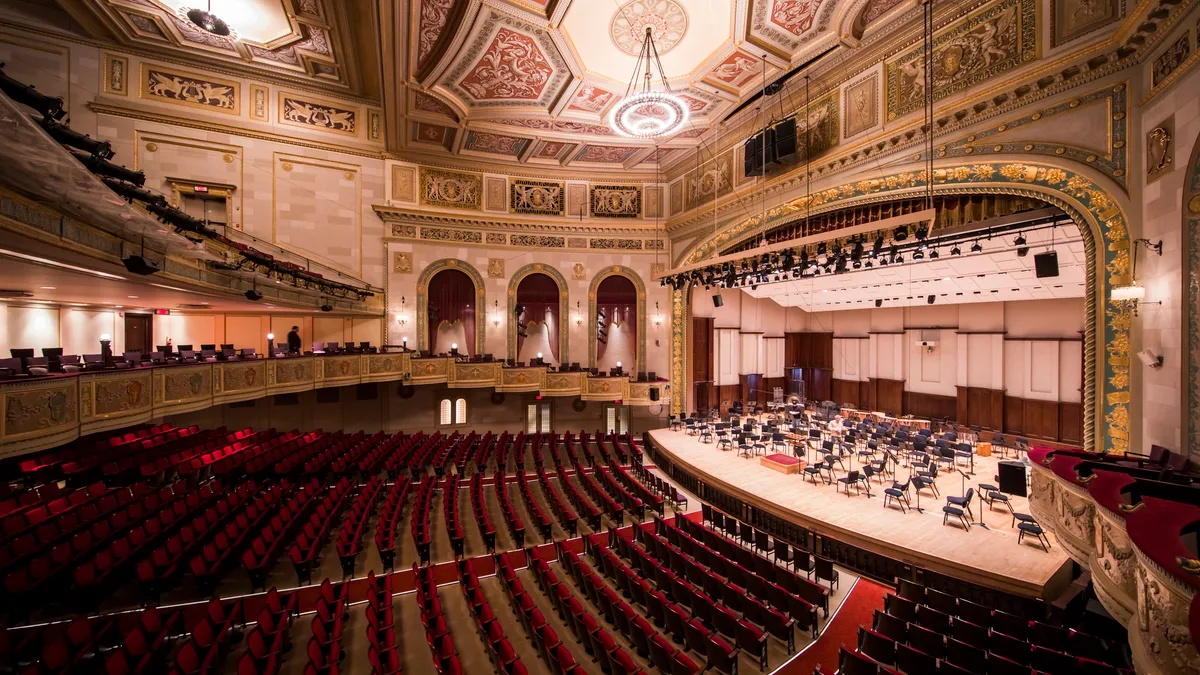Play a quick game of word association.
When someone says "classical music," what word comes to mind?
"Composer" or "orchestra." Maybe "Mozart" or "Beethoven." "Bassoon" (if you're like me) or the more glamorous "violin."
But certainly not "technology," "virtualization" or "cloud computing."
The Detroit Symphony Orchestra is shaking up a legacy reputation, weaving technology into its concert hall to promote access to education around classical music. Technology is tasked with helping bridge the access gap in a budget-constrained nonprofit environment.
Jody Harper, senior director of Technology & Infrastructure at Detroit Symphony Orchestra, was confronted with two sides of the DSO's technology use when he joined the team.
The orchestra has a long-standing history of weaving in technology to make music more accessible. The DSO boasts it was the first orchestra ever heard on the radio in 1922 and was early in offering webcasts of concerts, adding to a library of footage it offers on-demand.
But on the back end, the world of technology at DSO was so limited its clocks were wrong.
On his first day, Harper encountered three clocks showing different times in his workspace, he said, in an interview with CIO Dive. The clock on the desk phone displayed one time, the computer clock another and the clock on his cell phone showed a a third time — all were within seven minutes of each other and only one was right. So Harper fixed it.
A number of hours later a colleague stopped by to introduce himself and thank him for syncing the clocks. They had been told that the time couldn't ever be changed, Harper said.
"That let me know, at that moment, what kind of culture I was walking into and what they had been conditioned to believe and think and act and behave," Harper said. "It has been my goal to kind of reset that in totality."
Five years in, the thought of "no" in technology at the DSO has dissipated, according to Harper. People will come to him with concerns fairly quickly, tweaking the attitude of what's possible.
Virtualization: The second movement
The same technology running through the modern enterprise operates in nonprofits, though resources are more limited, requiring expensive problems to have creative solutions.
The specifics for the head of IT are "easy and terrifying" at the DSO; CRM's need attending to and finance and fundraising departments require support. But with live concert webcasts at play, Harper also has to ensure the internet line remains up with redundancies in place.
"I'm now bringing the mindset of thinking ahead," Harper said. "Whenever I implement new technologies, I want to make sure that it's going to keep us in play for the next seven to 10 years, based on our potential for growth."
While DSO ran a heavy technology stack, it did not have a reputation for strategically using services and some investments proved overkill. In 2013, the DSO had 24 physical servers. The organization "had just been misguided" about the server and network infrastructure required.
It took two years to "rip and replace everything," but Harper guided the server infrastructure down from 24 physical machines to five — three in a cluster set up specifically for 20 virtual machines and two others as a sandbox area to play in.
The DSO turned to vendor Scale Computing for IT virtualization and Office 365, part of Harper's move to put technology into the cloud and move beyond what a physical building can hold.
Whatever is done with software or hardware, Harper tries to put the organization in a situation where it's accessible no matter what happens, he said. Reducing infrastructure created savings, creating room for new firewalls and address an aging infrastructure.
It took three years to modernize and Harper worked closely with executives tying technology innovation to orchestra goals.
Executives and higher management are constantly looking for ideas on how to expand the DSO's brand and impact the community, Harper said. "I want to make sure we're prepared to do that in any way, shape or form."
"The last thing you want is to hit a technology wall because no investment was made into it in the outset," he said. "And that's what I'm here to prevent."












